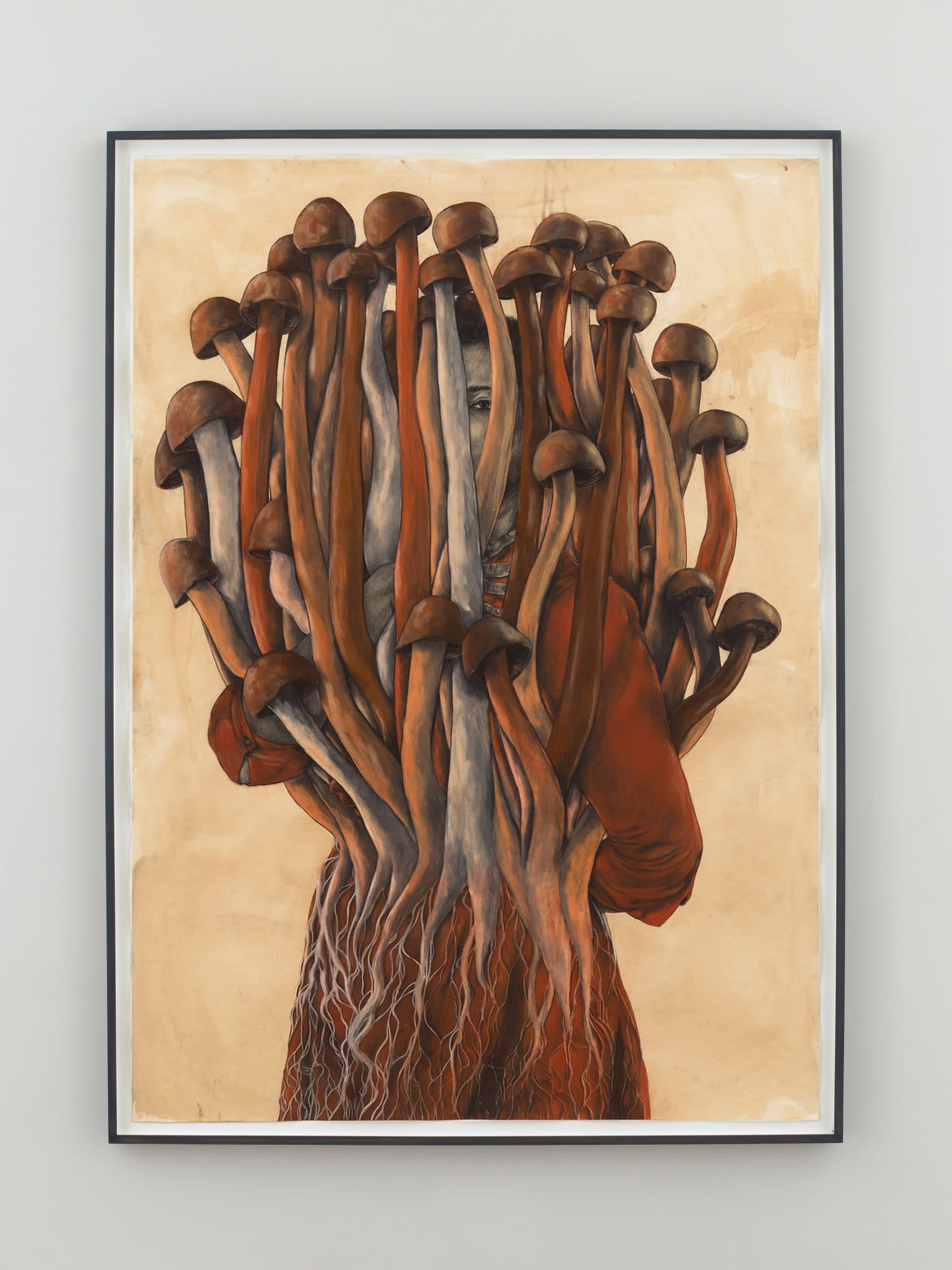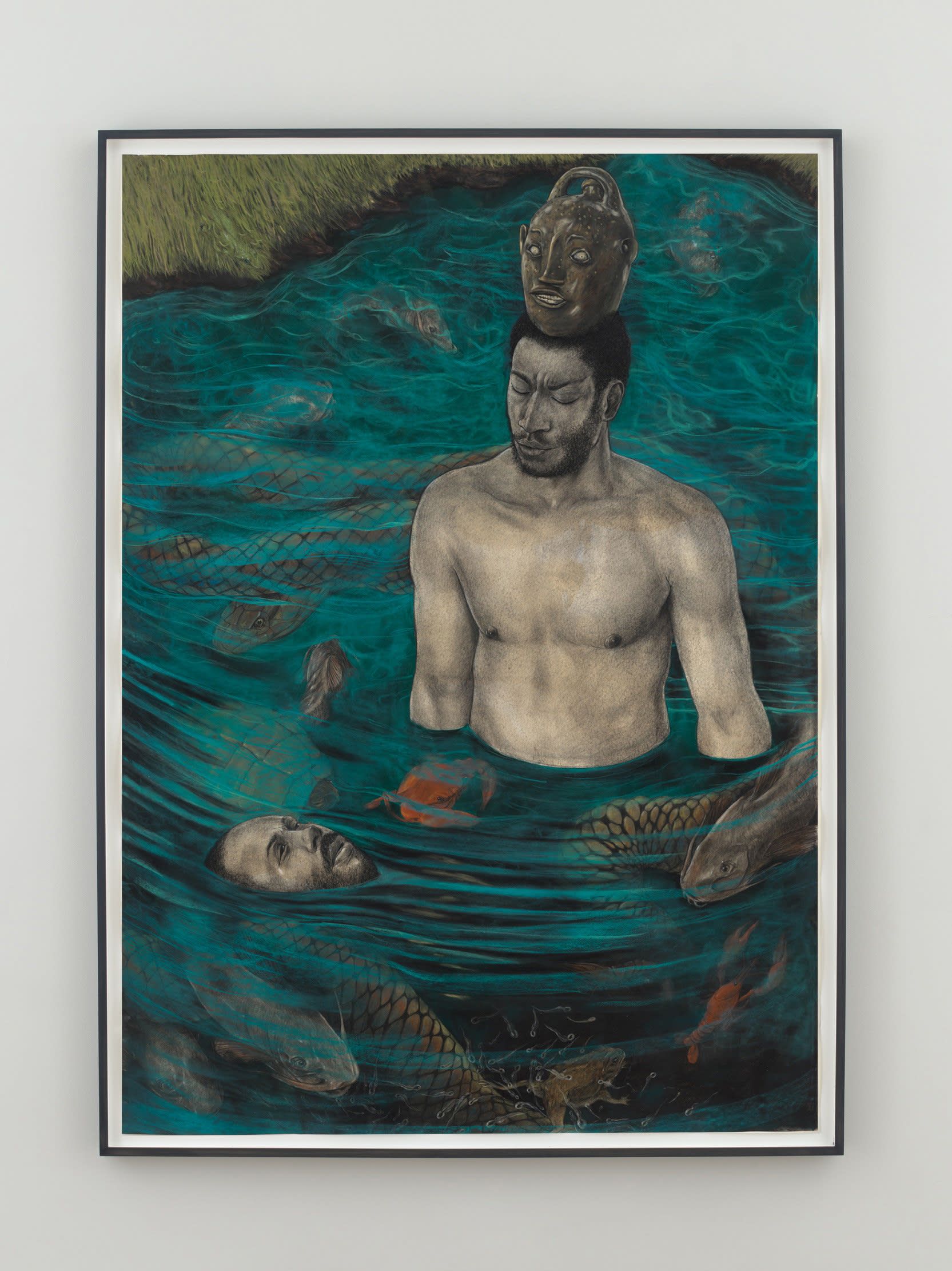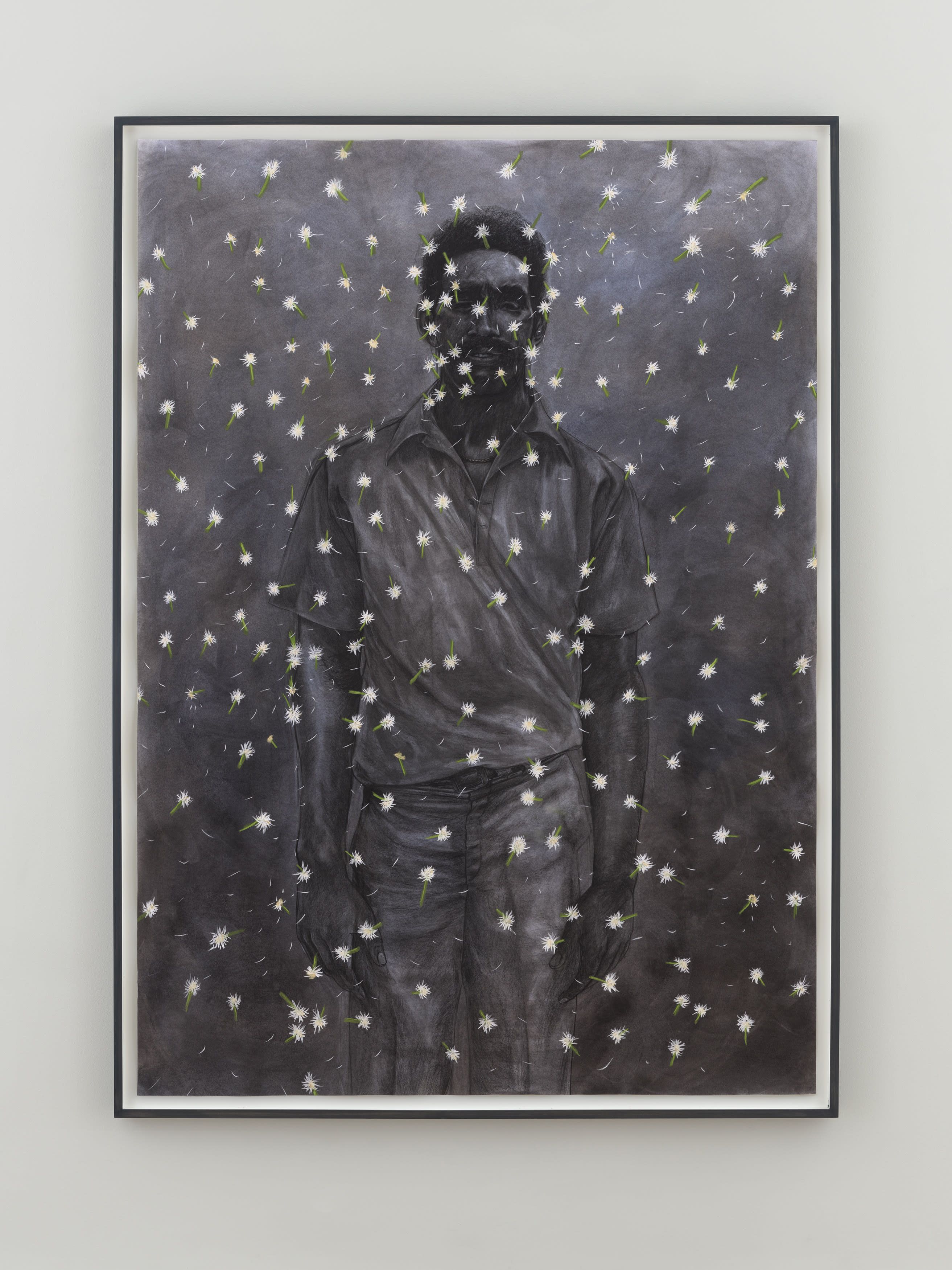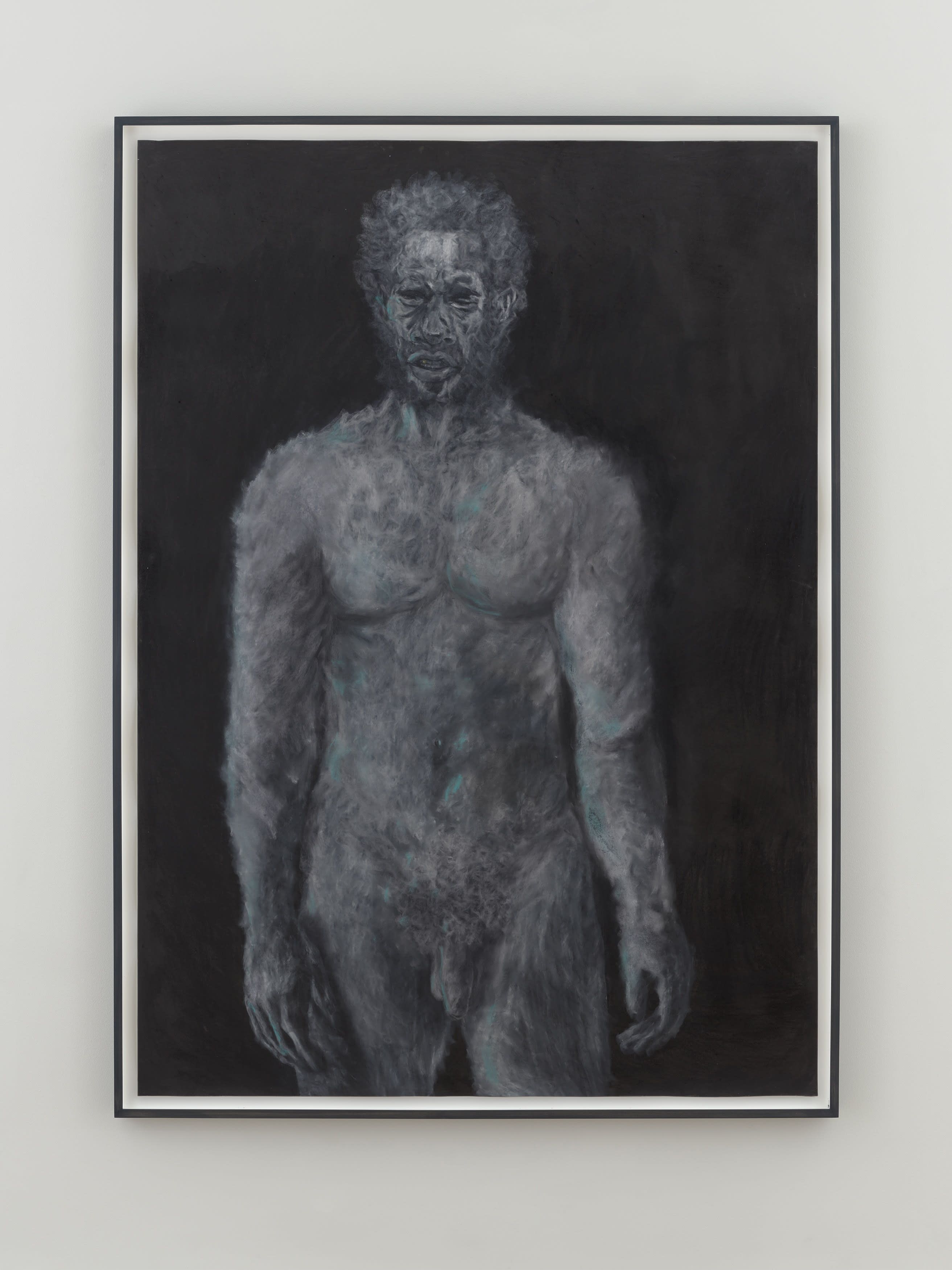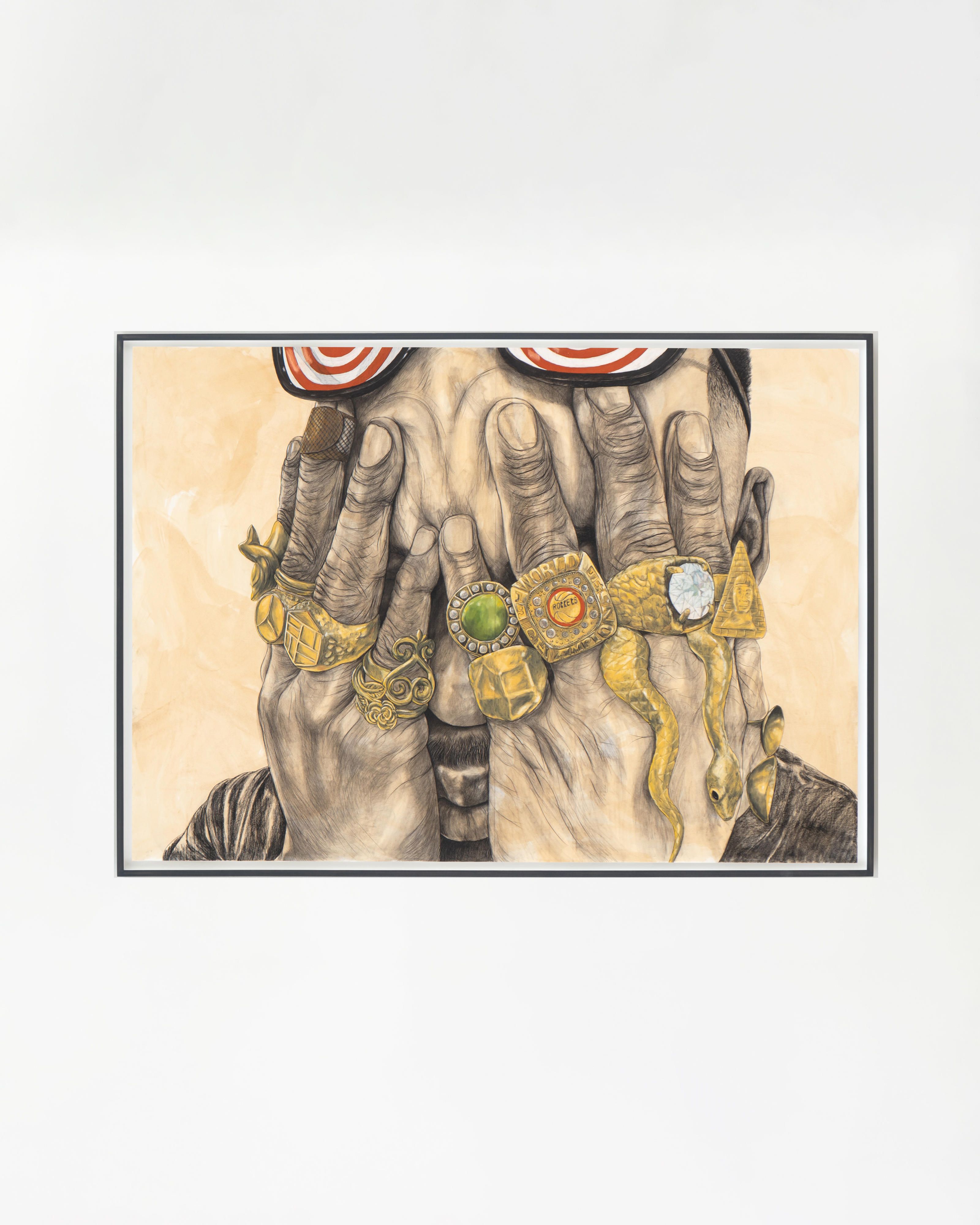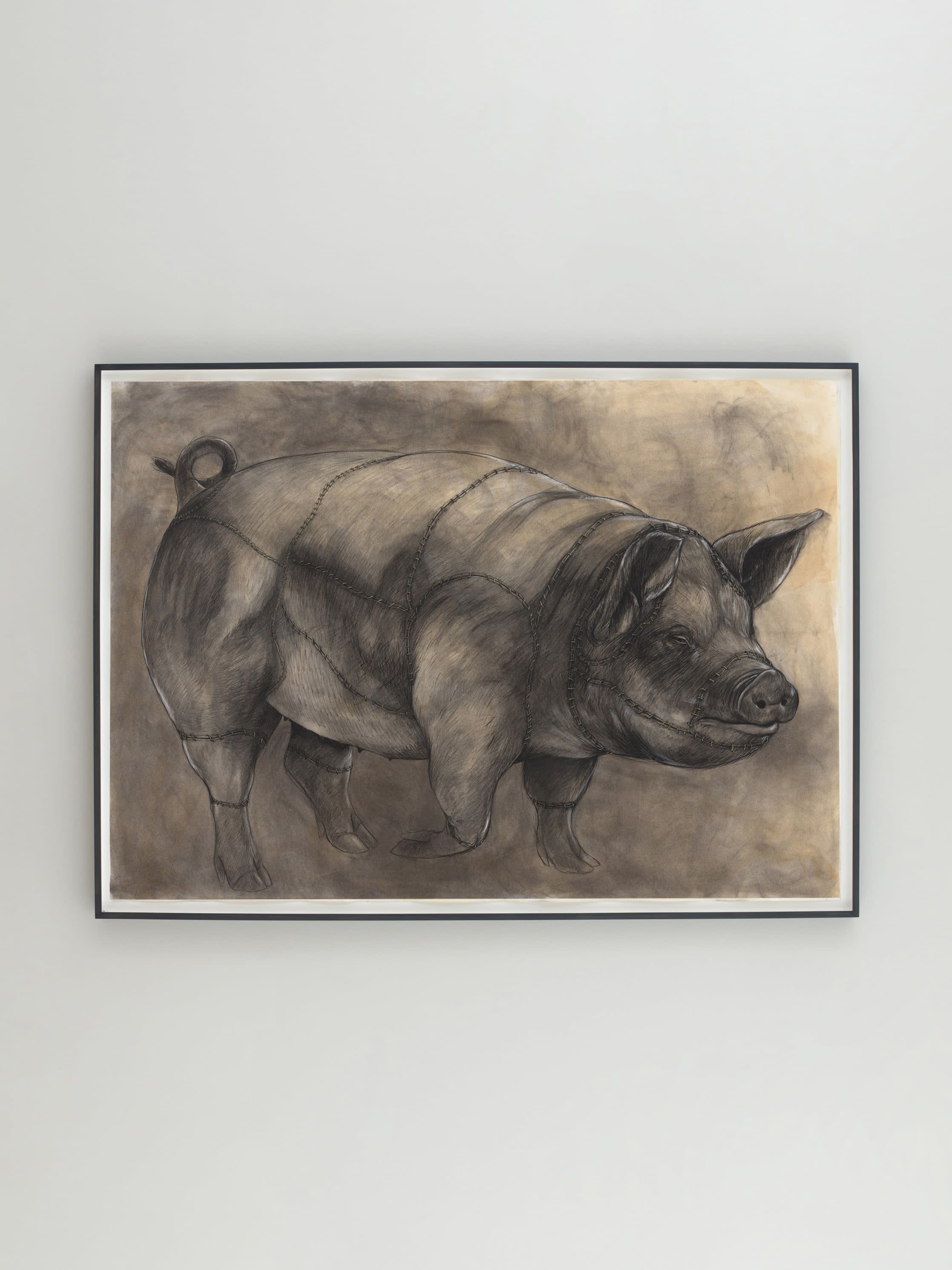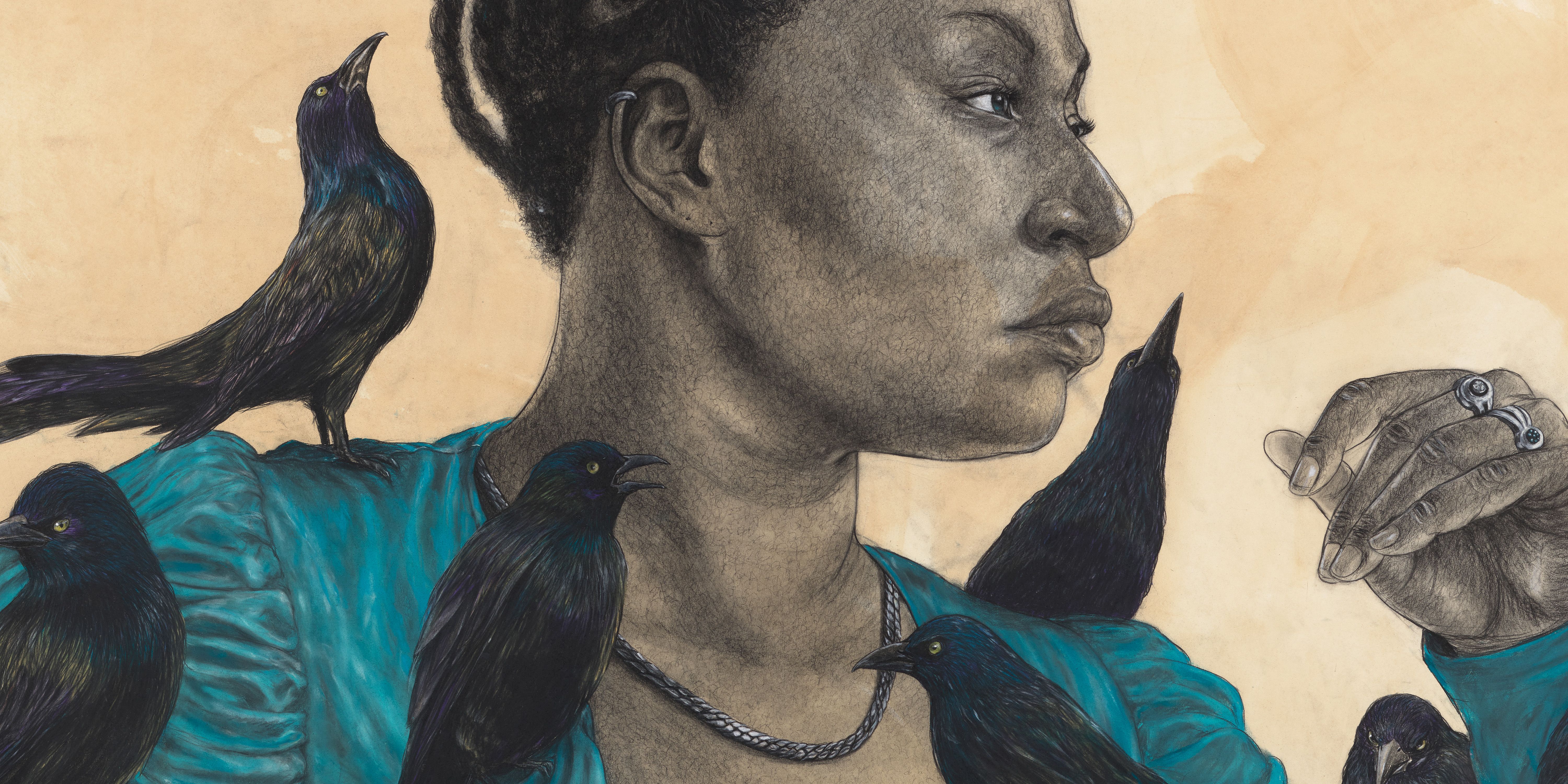
Robert Pruitt...Son...Sun...Sin...Syn ...Sen...Zen...Zenith...
Artwork
Robert Pruitt’s Amulets
by Monique Long
If the Spirit is an amalgamation of an artist’s ideas, influences, and sacred inspiration mediated between himself and the work he creates, Robert Pruitt has made legible a deeply personal process in a suite of ten large scale drawings. (1)
The title of the exhibition is excerpted from a libretto written by the avant-garde composer Sun Ra (1914–1993), whose music Pruitt has drawn inspiration from for this latest body of work and for works he has created in the past. (2) Emblematic of his improvisational style, Sun Ra’s text is a series of alliterative verses that juxtapose biblical references, double entendres, and vernacular expressions, a style that mirrors the formal characteristics of Pruitt’s monumental Black figures and the magical environments he creates for them to inhabit. The line...son...sun...sin...syn...sen...zen...zenith... suggests both the
sacred and the profane: as above, so below.
Pruitt, who was born and raised in Houston, Texas, where his family has lived for generations, centers his own origin story to construct iconography around an intimate narrative about life and loss, memory and love. (3) Rather than presenting art-historical themes or tropes, he references an array of influences related to a personal story: Black diasporic narratives, the South, food culture, and rituals. Pruitt photographs live models in bespoke costumes in his studio and then composes his drawings from the photographs, first dyeing the paper with coffee to achieve the nuanced color of his figures.
Aside from various musical genres, Pruitt’s interests include superhero stories, myths, vintage comic books, traditional West African objects, and mid-twentieth-century design. He also has an authoritative knowledge of speculative fiction. For example, Portrait of Herman Smith from Atlantic City (2024), a self-portrait and the largest work in the exhibition, alludes to the Wizard of Oz character from the film The Wiz (1978).
When drawing himself, Pruitt is usually identifiable by his signature X-ray sunglasses. Here, they sit on top of his head almost completely outside of the frame. Turned inward, seemingly fatigued, the artist refuses the gaze of the viewer, with his hand/s becoming the subject of the portrait. This is an example of a visual double entendre. Instead of the sunglasses, his hand or technical ability is foregrounded, obscuring his face in the portrait. Moreover, his hands are adorned with rings made with elements that traditionally function as amulets in several diasporic cultures: gold, peridot stone, and Sankofa symbols, stacked alongside a Houston Rockets championship ring for a good measure of contemporary swag. By casting himself as the antihero—aka Herman Smith, a character plagued by the constructed mythology that confined him—Pruitt calls into question our perceptions of what a “maker” is. Created in tandem, Held her firmly yet gentle as a soft seed (2024) shows Pruitt employing a storytelling device often used in classical oil painting, mise en abyme or the technique of composing a work within a work. This striking detail demonstrates Pruitt’s masterful draftsmanship evident throughout the artist’s oeuvre. Pruitt drapes Portrait of Herman Smith over the figure like a virtuoso protective covering; the self-portrait with amulets becomes the amulet itself, a motif that appears throughout the exhibition.
Continuing the theme, Man made of rain clouds (2024) and Monster on a 15 (2025) is another protagonist/antagonist pairing in dialogue. Man made of rain clouds is a portrait of a man in crisis; tender and finite. Pruitt strips away bravado and his trademark hyperrealism to portray a figure with emotional fragility and a deep need for care. It is a powerful reframing of male vulnerability within a society that often denies it. In this work, the nude figure is a field of gesture with hints of blue and a single gold tooth. In a surreal bloom, he is beautiful, eerie, indeterminate. The absence of eyes or clothing make the figure feel both divine and disconnected, like a symbol of authority that has lost its humanity—bizarre and strangely affecting. It made me think about inheritance, pressure, and how vulnerability is passed down or ignored altogether. The protagonist in Monster on a 15 is somber in his all-consuming children’s costume, his lit cigarette precariously close to the expressive strokes of his bright blue fur. Pruitt describes the work as a “play on contradictions: masculinity and scale, and the absurdity of fictional monstrosity.”(4)
The theme of care and protection for the Black body is evident throughout this selection of works and something Pruitt seemed preoccupied with while preparing for this show. (5) The throughline is the artist’s desire to create a constitutive habitat for each figure, one that is both spiritual and healing.
(1) The “Spirit,” meaning the ways in which we draw inspiration from an irreducible source, is a term coined by the nineteenth-century philosopher Georg Hegel. See Hegel, Phenomenology of Spirit, translated by A. V. Miller (Oxford University Press, 1979).
(2) The Wisdom of Sun Ra collection, Sc MG 942. Schomburg Center for Research in Black Culture, Manuscripts, Archives and Rare Books Division, New York Public Library.
(3) Conversation with Robert Pruitt, April 29, 2025.
(4) Studio visit with Robert Pruitt, May 16, 2025.
(5) Conversation with Robert Pruitt.
Monique Long is an independent curator and writer based in New York. For more information, please contact Caroline Currier (caroline@salon94.com)
Press
Colossal


